AWS Cloud Financial Management
Getting Started: Tracking AWS Cost Management Metrics
Collecting and analyzing data is critical to gaining valuable insights into your business and evaluating the effectiveness of your processes. Similar to how you measure your organizational activities, it is important to measure your AWS cost and usage efficiency metrics.
This blog post introduces 5 key cost management metrics that you can use to help you get started with your very own metrics dashboard, as well as drive towards KPIs that are meaningful to your business. This post is the first in a series that will show you how you can build and use cost-, usage-, and value-based metrics to help drive greater efficiency.
Building a Dashboard
The first step when thinking about metrics is to determine the most impactful way to display and share them with members of your business. For many of you, a centralized dashboard seems to be the lingua franca for talking about metrics.
We have combed through dozens of dashboards to find the most commonly recurring metrics. While many of you seem to use AWS Cost Explorer, AWS Cost & Usage Reports, and other products, we couldn’t help but notice that many of you spend a lot of time building out beautiful spreadsheets and dashboards, so we have created the below dashboard in Excel.
This is what we typically see:
- Monthly Growth KPIs
- Amazon EC2 Unit Costs
- Amazon EC2 Instance Costs
- Amazon EC2 Usage Coverage
- Amazon S3 Costs by Storage Class
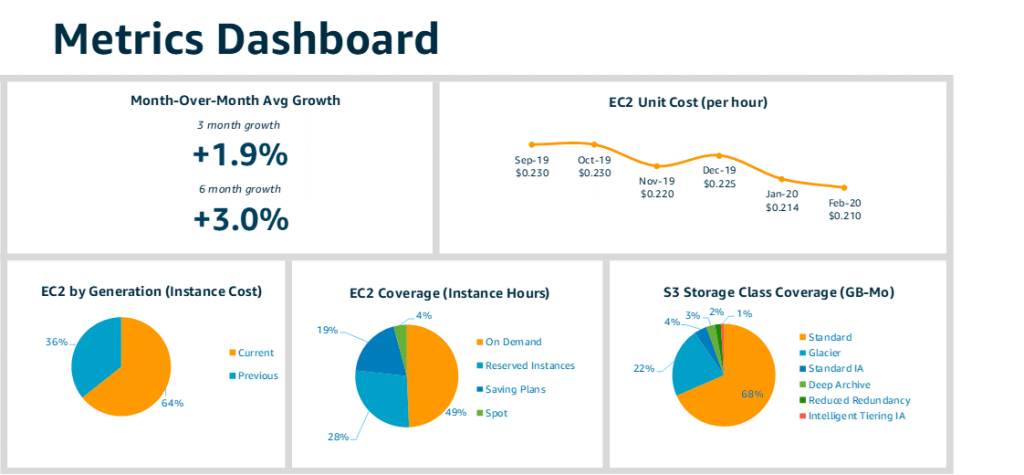
In order to keep things focused, we kept the individual charts focused in on EC2 and S3, but you can apply these dimension to any service you choose. Let’s dive in!
Metric 1: Monthly Growth
Examining your monthly growth allows you to gain a line of sight into how quickly your AWS implementation is growing in terms of your overall costs. We also recommend examining these figures over a couple different lookback periods (3 or 6 months seems to be the most popular) to adjust for cyclical patterns in your business.

Sample KPIs: Monthly growth, forecasted vs. actual growth
Value: Understand the total monthly growth of your business or applications
Metric #2: Amazon EC2 Unit Costs
Amazon EC2 powers many workloads on AWS, so it should not come as a surprise that EC2 may account for a larger portion of your costs than some other services. Since EC2 is likely used across a number of workloads, we recommend tracking your costs at a more granular level of detail (such as daily or hourly). This analysis can also be used to track how your pricing models (such as Spot, Savings Plans, Reservations, etc.) are impacting your average unit cost.
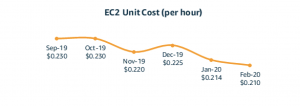
Sample KPIs: EC2 hourly or daily costs
Value: Understand the EC2 unit cost per subscriber
Metric #3: Amazon EC2 Instance Costs
The latest instance generations often provide enhanced computing power and greater cost savings. For that reason, it can be very impactful to identify the EC2 workloads that are running on older instance generations and formulate a plan (and goals) around upgrading to the latest instance generations. We have also seen customers find success when setting a specific goal for their instance portfolios, such as ensuring that less than 20% of their resource fleet is running on older instance generations.
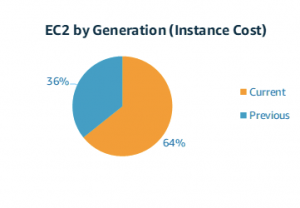
Sample KPIs: Costs by instance type, costs by instance generation
Value: Optimize EC2 cost and usage efficiency
Metric #4: Amazon EC2 Usage Coverage
If you are scaling up your usage of AWS, there are a number of pricing models that you can use to achieve greater savings. For your EC2 usage, you can choose from Spot instances, Savings Plans, and Reserved Instances, which serve a variety of different use cases. In each case, we would recommend setting a threshold for how much of your instance fleet you would like to cover. These goals vary by customer, but, if your usage patterns are fairly stable, it may make sense to shoot for something like 15% spot coverage and 50% Savings Plans coverage.
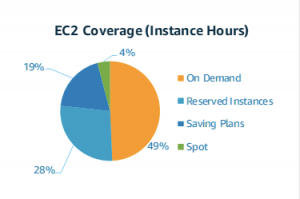
The image above shows how your EC2 running unit cost is trending and how your pricing models (Spot, Savings Plans, etc.) impact your average unit cost.
Sample KPIs: Cost by purchase option, purchase option coverage
Value: Optimize your cost savings by leveraging pricing models
Metric #5: Amazon S3 Costs by Storage Class
Amazon S3 is another service that you probably are using a lot of – but did you know that S3 has a ton of built-in functionality to help you optimize your costs? Similar to EC2, you can review the various storage classes that your organization is using and configure policies to influence them. For example, you can configure that all S3 buckets within Application InnovationProject follow the CostSavings lifecycle policy, ensuring that you aren’t incurring unplanned costs.
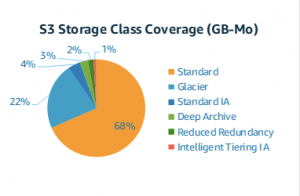
Sample KPIs: Cost by storage class, storage class breakdown by workload
Value: Automate cost savings using lifecycle policies
Conclusion
Once you’ve configured a dashboard of your very own with your own take on the metrics outlined above, you’re probably wondering: what comes next? Well, there are a number of places you can go, but here’s what we recommend looking into next for building your next set of KPIs:
Cost- and usage-based KPIs are a great start for enterprise-wide reporting and allow you to set KPIs that span across all areas of a business. A popular KPI across customers is setting a target coverage % for Reserved Instances and Savings Plans such as 50% coverage.
Value-based KPIs unite your business value drivers with AWS metrics to create KPIs you can track against your business priorities. Many customers create a value-based KPI for EC2 unit cost to show their average unit cost per business activity (typically, by application or subscriber).
Stay tuned for additional metrics in the next post in this metrics series!